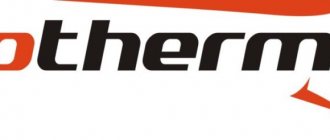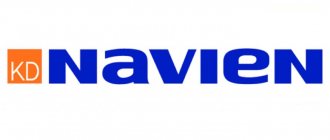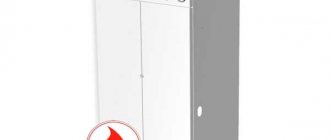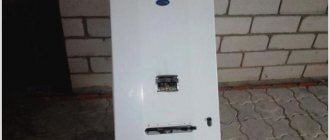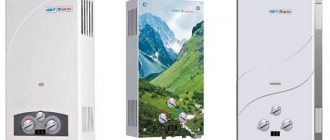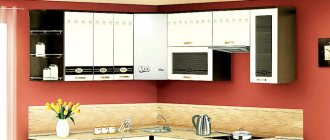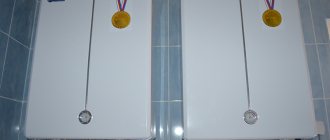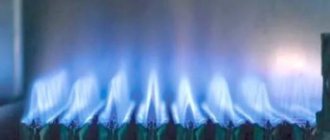About company
The Rinnai company was founded in 1920. Its creators are Japanese entrepreneurs Rino and Naito. Sells equipment all over the world. Motto. The manufactured devices use the latest developments, innovative technologies, digital and electronic control. Of the variety of products produced, the company sends only wall-mounted boilers to Russia. Around the world, 300 thousand boilers are launched annually - this is three times more than the whole of Europe produces.
Where to buy a Rinnai gas boiler
In Moscow and Moscow Region
- MirCli (https://mircli.ru/goods_selection2.html?n_catalog=68&firm[]=515&min=0&max=15510000&mosh_ot=0&mosh_do=6000) – 8 (495) 666-2219.
- Teplovodservice.ru/kotly/rinnai/nastennye_gazovye/) – 7 (495) 134-44-99, Moscow, 25 km MKAD, external side, TC “Constructor”, line E, pav. 1.8.
- Official dealer (https://www.rinnai-russia.ru/catalog/gazovye-kotly/) – 8 (495) 665-08-95, Moscow region, Skhodnya, Leningradskaya st., no. 4.
Design Features
The main feature of Rinai boilers is their technical capabilities. Japanese technology is designed to replace humans in matters of control and adjustment - everything is done by automation. The air-gas mixture supplied to the burner is controlled by devices - they monitor its composition and concentration so that the combustion effect is maximum. As a result, productivity and efficiency increase, and gas consumption decreases.
The operating mode is selected automatically, depending on the gas pressure in the pipes. What can we hide - gas suppliers often suffer from uneven pressure in gas pipelines. This is especially true in winter. Using automation, the Japanese were able to eliminate the problem of pressure drops - regardless of its value, the device works, saves gas and creates a comfortable temperature in the house.
Timing and solution methods
Typically, clocking is observed during the off-season, when there are no severe frosts and there is no need to warm up the system for a long time.
In this situation, the boiler starts at maximum, quickly heats the water and turns off. Next, the pump removes the coolant throughout the system, the temperature drops, and the burners start up again.
In this mode, both 20kW and 30kW boilers operate. What's the difference?
And the difference is that the first one will consume gas during the launch intervals, conditionally 2m3, and the second 3m3. When the boiler cycles, it does not have time to evaluate anything and reach optimal power.
It starts at maximum and stops at maximum. But all this applies to old, “dumb” models.
In modern wall-mounted appliances with modulating burners (1:10) and smart electronics, the boiler’s operation is designed in such a way that if the automation initially detects overheating of the coolant, the next switching on will occur at a lower power, or you can reduce it yourself.
The only problem is when the minimum power of the boiler is not so minimal.
Therefore, check the instructions and ask the seller whether the gas boiler has a modulation function or not. And the more frequent the adjustment step, the better.
Mistake No. 5 But there is no need to overdo it with the so-called “brains”.
90% of consumers never use weather-dependent automation or GSM modules in their lives. It's not worth overpaying for them.
It’s better to install a couple of smart and inexpensive room thermostats.
Most people solve the age-old problem with clocking in this way.
Advantages and disadvantages
Gas is the most profitable fuel, which is why heaters running on it are so popular. But domestic analogues and some foreign ones have several disadvantages, due to which their operation becomes uncomfortable, causes a lot of trouble and even irritates. Just think about blowing out the burner or the inability to light the wick. The Japanese boiler has a lot of advantages that make it extremely attractive for owners of private houses and apartments:
- Small size and weight.
- Economical fuel consumption - Rinnai costs about twice as much as Luch or Signal, but you will pay less for gas, and there will be no problems with operation.
- External attractiveness.
- Simple design. Installation usually does not cause any problems. The controls are intuitive - anyone can master it. Reliable and durable.
- Repairable - any component or element that fails must be replaced.
- “Independence” - you only need to program it once, and you don’t have to interfere with its work anymore.
- Maintenance is minimal. For example, the RB-106 GMF model has a smoke exhauster installed - it prevents the formation of soot in the chimney.
- Adaptation to our conditions.
- Availability of an extensive service network.
But that’s not all, the global advantages of Japanese technology are based on specific technical solutions:
- Fault self-diagnosis system.
- Operation at low water pressure.
- Control and adjustment of flame intensity.
- Protection system for the control unit.
Flaws
There are some disadvantages, but they are not significant compared to the above advantages:
- A large step in temperature adjustment - it is not always possible to set the desired value.
- Relatively high price - approximately 50,000 rubles.
- At low pressure the device smokes and the efficiency drops.
- Can be installed to heat rooms from 100 sq. m.
- It is necessary to install automation that monitors gas leaks.
- Installation is simple only for specialists - it is not recommended to install the equipment yourself.
Owner reviews of Rinnai gas boilers: advantages and disadvantages
| Advantages | Flaws |
| Quality, reliability and durability, expressed in the materials used and conscientious assembly | Vulnerability to power surges (requires the installation of a voltage stabilizer, preferably a tristor) |
| Service life in practice is 8-15 years | Energy dependence |
| High efficiency and cost-effectiveness | A chimney in severe frosts (-15°C and below) requires heating or an anti-icing structure |
| Customer-oriented and competent service | Some owners note that the service is “expensive”, although of high quality. |
| Quiet, although not as silent as German competitors, operation | |
| Optimal cost in relation to reliability and performance | |
| Aesthetic design and compact dimensions | |
| Easy to install, there are cases of self-installation and connection |
How does gas equipment work?
Rinnai boilers can operate on any gas - you can always be insured in case of an accident on the gas pipeline. Heat is generated by burning fuel. Special burners are used - their design allows to reduce the volume of nitrogen oxide released during combustion. The characteristics are outstanding, and the device is brilliantly simple. Design Features:
- Case material – high-strength steel. The top is powder coated.
- All important elements are protected from atmospheric influences - foam filling is used.
- Each model is equipped with automatic flame control.
Gas savings are 14%. Harmful emissions are minimal. There is a fault diagnostic system.
Important! For uninterrupted operation of volatile devices and suppression of voltage surges in the network, an uninterruptible power supply is required. You can also provide stable voltage using a generator or battery.
Place in demand ranking
Annual sales of Electrolux boilers amount to tens of thousands. Russians choose Swedish boilers because of the good price-quality ratio. Ratings compiled by experts are often subjective, but they still help consumers navigate the abundance of brands. If we talk about moderate cost - namely, it is the most powerful factor influencing the buyer, then the five winners look something like this: AOGV and AKGV, Navien, Electrolux, Protherm, Baxi.
The Swedish corporation produces boilers of various types - wall-mounted and floor-mounted. Consumers are more willing than others to buy dual-circuit versions. Power is often chosen to be low or medium. Range – 11-30 kW. Cost - within 25,000-45,000 rubles. Popular series are Basic Space and Basic Duo. The price depends on the thermal power.
What series have been released?
Rinnai produces four series, differing in technical parameters - each of them is designed for specific operating conditions. All models are wall-mounted, double-circuit. One is for heating, the second is for heating hot water. Thanks to the company’s engineers’ own developments, the manufactured equipment saves consumers 20% of gas when switching to DHW mode.
RMF
The series appeared in 2013. The basis for its creation was the previously released EMF series - it was improved by adding several innovative automation units. RMF Features:
- They are easy to control - the developers have added a color display to the design and even added voice control.
- An automatic system is installed that responds to weather conditions and regulates the temperature.
- The devices are volatile - connected to the power grid, so the developers have provided units that monitor electricity consumption, as well as take measures to reduce it.
- Automatic control of water temperature in DHW mode, accuracy – up to a degree. It turns on when water consumption is from 2.5 l/h, and turns off when water consumption is 1.5 l/h. Accuracy – 0.3 l/h. An operational consumption function has also been added - all fuel is used to heat the coolant in the secondary circuit - this ensures an uninterrupted supply of hot water at a given temperature.
- For greater convenience, the manufacturer has provided a remote control that can answer questions asked by voice.
- There is a programmer - the operating mode is set for a certain time.
- New – a unit that controls and adjusts the intensity of the flame. Uniform distribution of fire across the burner is achieved - regardless of the pressure in the gas pipeline.
RMF boilers are available with power from 18,600 to 41,900 W. The combustion chamber is closed. Water heating is flow-through.
EMF
This is the simplest series, which formed the basis for other models. But, despite the presence of more advanced versions, the EMF models remain an example of Japanese quality. Power range – 12,000-42,000 W. Power adjustment for each device is within 25-100%. Forced ventilation is provided. There is a circulation pump with a magnetic coupling that prevents the motor from jamming. The control process is controlled by a microprocessor. Models in this series are manufactured by Korean factories belonging to the Rinnai concern.
GMF
This is the so-called “green series”. The highest level of environmental friendliness. Technical characteristics are similar to the EMF series. Carbon monoxide emissions are reduced to a minimum. A uniform supply of a combustible mixture of air and gas, measured automatically in precise proportions, is ensured. Adjusting the burner flame. Power range 12-42 kW.
SMF
For heating 100-400 sq. m. Two heat exchangers. Secondary production – 14 l/min. The supply of gas-air mixture is smoothly regulated thanks to a turbocharged burner. Minimal emissions make it possible to virtually eliminate the formation of scale and soot. 18-42 kW.
TOP 10 rating
Let's consider the most popular models of double-circuit gas boilers, recognized by specialists and ordinary users as the most successful in design and operational terms:
Buderus Logamax U072-24K
Gas double-circuit boiler designed for wall mounting. Equipped with a closed combustion chamber and a separate heat exchanger - the primary one is made of copper, the secondary one is stainless.
Heating area - 200-240 m2. Has several degrees of protection.
Models with the “K” index heat hot water in flow-through mode. It is possible to connect a room temperature controller.
Federica Bugatti 24 Turbo
Representative of Italian heating technology, wall-mounted double-circuit gas boiler. Designed to work in a cottage or public space with an area of up to 240 m2.
Separate heat exchanger - copper primary and steel secondary. The manufacturer provides a 5-year warranty, which indicates confidence in the quality and operational capabilities of the boiler.
Bosch Gaz 6000 W WBN 6000-24 C
The German company Bosch is known all over the world, so it doesn’t need any additional introductions. The Gaz 6000 W series is represented by wall-mounted models designed for use in private homes.
The 24 kW model is the most common; it is optimal for most residential and public premises.
There is multi-stage protection, the copper primary heat exchanger is designed for 15 years of service.
Leberg Flamme 24 ASD
Leberg boilers are usually classified as budget models, although there is no noticeable difference in cost with products from other companies.
The Flamme 24 ASD model has a power of 20 kW, which is optimal for houses with an area of 200 m2. A special feature of this boiler is its high efficiency - 96.1%, which is noticeably superior to alternative options.
It runs on natural gas, but can be converted to liquefied gas (replacement of burner nozzles is required).
Lemax PRIME-V32
A wall-mounted double-circuit boiler, the power of which allows you to heat 300 m2 of area. This is suitable for two-story cottages, shops, public or office premises.
Produced in Taganrog, the basic technological principles of assembly were developed by German engineers. The boiler is equipped with a copper heat exchanger that ensures high heat transfer.
Designed for operation in difficult technical conditions.
Navien DELUXE 24K
Korean boiler, the brainchild of the famous company Navien. It belongs to the budget group of equipment, although it demonstrates high performance qualities.
Equipped with all the necessary functions, has a self-diagnosis system and frost protection. The boiler power is designed to operate in houses up to 240 m2 with ceiling heights up to 2.7 m.
Installation method: wall-mounted, there is a separate heat exchanger made of stainless steel.
MORA-TOP Meteor PK24KT
Czech double-circuit gas boiler designed for wall-mounted installation. Designed for heating 220 m2. It has several degrees of protection, blocking in the absence of liquid movement.
It is possible to additionally connect an external water heater, which significantly expands the possibilities of DHW supply.
Adapted to unstable power supply voltage (the range of permissible fluctuations is 155-250 V).
Lemax PRIME-V20
Another representative of domestic heating engineering. Wall-mounted double-circuit gas boiler, designed to serve 200 m2.
A modulating burner allows you to distribute fuel more economically by changing the gas combustion mode depending on the intensity of coolant circulation. It has a separate stainless heat exchanger and can be connected to a room thermostat.
There is a possibility of remote control.
Kentatsu Nobby Smart 24–2CS
Japanese wall-mounted gas boiler providing heating of 240 m2 and hot water supply. Model 2CS is equipped with a separate heat exchanger (primary copper, secondary stainless).
The main type of fuel is natural gas, but when changing jets it can be switched to using liquefied gas. Most of the performance characteristics correspond to European boilers of similar power and functionality.
It is possible to use several design options for the chimney.
Oasis RT-20
Wall-mounted double-circuit gas boiler made in Russia. Designed to work in rooms of about 200 m2. Equipped with an efficient copper heat exchanger and a stainless secondary unit.
The combustion chamber is turbocharged, there is a built-in expansion tank and a condensate drain.
With an optimal set of functions and high build quality, the model has a relatively low price, which ensures its relevance and popularity.
Model overview
RB 167 DMF
Wall-mounted version. Convection type. Two circuits. Heating power 18,600 W. Heats an area of 186 sq. m. Three power levels. Efficiency – 88%. Closed firebox. Heats water up to 85 °C. In the DHW circuit - 60 °C. Capacity – 12 l/min. There is an 8.5 liter expansion tank. There is no outdoor temperature sensor in this modification. But there is a room thermostat and a remote control. Weighs 24.5 kg.
RB 367 EMF
Like all Rinnai models presented on our market, this is a dual-circuit and energy-dependent wall-mounted device. 41.9 kW. Designed for 419 sq.m. 88% efficiency. Weighs more than the previous modification: 29.5 kg.
RB 107 EMF
11.6 kW. 95% efficiency. Heats an area of 30-120 sq.m. Weighs 24.5 kg. Copper heat exchanger is a guarantee of durability. The MITSUBISHI processor controls combustion and adjusts the oxygen content in the firebox. There is a display that is suitable even for people with very low vision. There is self-diagnosis.
RB 207 EMF
23.3 kW. Heats up to 233 sq.m. Efficiency - 88%. Mounted type. Weighs 25.5 kg. The control unit is protected by a special filling from contamination. There is multi-stage frost protection. You can update the software via your laptop.
RB 307 RMF
7-34.9 kW. Will heat an area up to 349 square meters. m. 87% efficiency. Minimal gas emissions. Operates stably at minimal gas pressures. Can be powered by a cylinder filled with liquefied gas.
Prices: summary table
| Model | Number of circuits | power, kWt | Efficiency, % | Gas consumption, cubic meters m/hour | Cost, rub. |
| RB-167 RMF | double-circuit | 18,6 | 85,3 | 2,05 | 56 000 |
| RB-167 EMF | double-circuit | 18,6 | 88,2 | 1,83 | 49 000 |
| RB-207 RMF (BR-R24) | double-circuit | 22,7 | 86,3 | 2,41 | 59 000 |
| BR-UE30 | single-circuit | 29,1 | 91,8 | 2,87 | 65 000 |
| RB-277CMF | double-circuit | 29,7 | 104,6 | 1,84 | 84 000 |
Poll: which Rinnai boiler model did you choose?
Installation and connection
Gas equipment supplied to consumers includes a passport for the device and instructions that describe the device and its connection diagram. The information presented is for informational purposes only; it is advisable that specialists install the equipment. They also configure the device. Owner reviews indicate that most serious problems are associated with errors made during installation.
- Installation of water filters. One is at the entrance to the heating system, the second is before the entrance to the hot water supply system.
- Frost protection. Pouring antifreeze into the system. There is a heating mode for heating the coolant - up to +7 degrees.
- Fuel consumption is adjusted automatically. Electricity consumption is 0.3 W/h and 0.22 W/h, respectively, in normal and economy modes.
- The temperature can be adjusted using the control panel, controller (installed on the body), GSM notification program and mobile phone.
- Can be converted to liquefied gas.
- By purchasing a cascade control unit, you can combine several devices into a network. adjustment will be carried out by one controller.
- Condenser models are noisy. To reduce the noise level, adjust the pump performance. The settings allow you to enable one of three operating modes.
Exploitation
All rules and requirements for the operation of a gas single-circuit boiler are described in detail in the instructions, which must be carefully studied.
Each model differs from others in certain specific features, so it is important to understand in advance all the requirements set forth by the manufacturer. In addition, it is necessary to create conditions for trouble-free operation of the boiler
Experts recommend using a voltage stabilizer, since the electronic control unit is sensitive to the quality of the power supply. If surges occur or the voltage does not match the specified parameters, errors may occur, and sometimes the control unit burns out
In addition, it is necessary to create conditions for trouble-free operation of the boiler. Experts recommend using a voltage stabilizer, since the electronic control unit is sensitive to the quality of the power supply. If surges occur or the voltage does not meet the specified parameters, errors may occur, and sometimes the control unit burns out.
When connecting to the power supply network, it is imperative to make a good grounding, otherwise the self-diagnosis system will begin to give incorrect information and constantly show an error.
Water quality is also an important factor. If the water in the region is too hard, softeners and special filters must be used. Scale in the heat exchanger slows down heat transfer, which means you have to increase the temperature. Excessive heating quickly damages boiler parts, and excessive gas consumption increases the payment amount.
Wall-mounted single-circuit gas boilers are convenient and popular sources of thermal energy in private houses, apartments and other premises. They are reliable, durable, and able to work in difficult conditions. At the same time, the user must ensure all the manufacturer’s requirements in order to keep the unit in order for its entire service life.
The main advantage of a single-circuit boiler is the ability to work in tandem with a storage boiler, which allows you to provide the room with hot water in sufficient quantities. Gas single-circuit wall-mounted boilers are highly rated by their owners and are in high demand.
- How to choose the right gas heating boiler for a private home: types, classification, review of popular manufacturers, their pros and cons
- How to choose the best diesel heating boiler: types, design, selection criteria, review of 6 popular models, their pros and cons
- How to choose the best long-burning solid fuel boiler: types, purpose, features, selection criteria, review of 9 popular models, their pros and cons, as well as reviews from owners
- Which boiler for heating a private home is better to choose: comparison of gas, electric, solid fuel devices, as well as liquid fuel, their pros and cons
Comparison of Rinnai and Navien
Consumers love to compare products with similar characteristics. This is why Japanese and Korean boilers are so often compared - Rinnai and Navien, respectively. Having almost identical parameters, they differ in price - Korean products are cheaper. Their estimated cost is 26,000 - 76,000 rubles. "Rinnai" - 50,000-95,000 rubles. There is no big difference between the operation of the devices. The “Koreans” have a fireproof coating on the heat exchanger. Navien is easier to maintain - users claim that its design is simpler.
Advantages
Japanese gas boilers are becoming more popular and more in demand every year. This is due to the many advantages that these units have:
- equipped with modern electronics and automation, making them easy to operate, reliable and safe;
- very compact in size: if we compare Japanese and European units, the former are half the size;
- economical;
- environmentally friendly;
- safe: in Japan, boilers are produced only with a closed combustion chamber and forced removal of flue gases;
- All parts that come into contact with heated water are made of high quality steel.
Coaxial chimney device.
